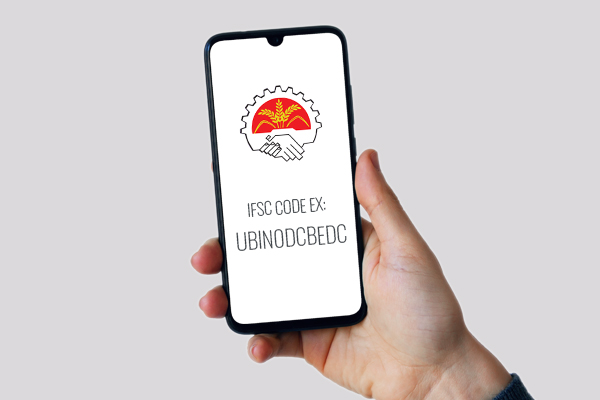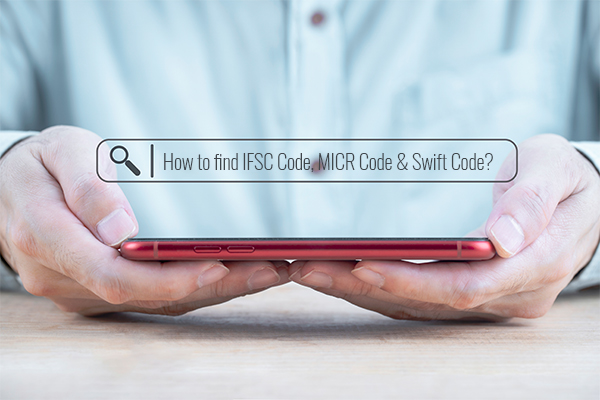 Ernakulam District Co Operative Bank IFSC Code and MICR Code
Ernakulam District Co Operative Bank IFSC Code and MICR Code
Find Ernakulam District Co Operative Bank IFSC Code, MICR Code and branch details for NEFT, RTGS & IMPS transactions.
 Ernakulam District Co Operative Bank IFSC Code and MICR Code
Ernakulam District Co Operative Bank IFSC Code and MICR CodeFind Ernakulam District Co Operative Bank IFSC Code, MICR Code and branch details for NEFT, RTGS & IMPS transactions.
 Ernakulam District Co Operative Bank IFSC Code Finder - Select Your State
Ernakulam District Co Operative Bank IFSC Code Finder - Select Your StateThe Indian banking system uses unique identification codes for each bank branch in the country. These codes are used for online money transactions and other banking services. For example, the Ernakulam District Co-Operative Bank IFSC Code is used to send money through NEFT, RTGS, and IMPS. The Indian banking system uses unique identification codes for each bank branch in the country.
These codes are used for online money transactions and other banking services. For example, the Ernakulam District Co-Operative Bank IFSC Code is used to send money through NEFT, RTGS, and IMPS. The Indian banking system uses unique identification codes for each bank branch in the country.
These codes are used for online money transactions and other banking services. For example, the Ernakulam District Co-Operative Bank IFSC Code is used to send money through NEFT, RTGS, and IMPS.
IFSC code is the most used banking code in India. It helps the banking system correctly identify the bank branch for the corresponding account number. This speeds up online funds transfer services. Similarly, the MICR code is used to validate the cheques and clear the transactions through ECS.
In this article, we’ll learn more about the IFSC and MICR codes, ways to find the codes for a bank branch, and methods to send money online. We’ll talk about making online money transfers through NEFT, RTGS, and IMPS.

The IFSC code is short for the Indian Financial System Code developed by the RBI (Reserve Bank of India). It is an 11-character unique code with alphabets and numbers. The code is different for every branch of each bank in the country.
The IFSC code is divided into three parts- bank code for the first four alphabets, a zero, and branch code for the remaining six characters. For example, the Ernakulam District Co-Operative Bank Head Office branch IFSC Code is UBIN0DCBEDC. This IFSC code belongs to the head office branch in Kakkanad, Ernakulam, Kerala. Here,
The branch code can be alphabets or numbers and is sometimes a combination of both. This depends on the type of bank. The fifth character will always be zero (0).
The IFSC code is used by the banks and customers. We need to know the IFSC code of a person to send money to their account through online fund transfer methods. The banking system uses the code to identify the bank branch and deposits the money to the beneficiary’s account.
What if you enter the wrong IFSC code? The transaction will still go through and be successful if you provide the correct account number. However, if both are wrong, the transaction will fail, or the amount will be deposited in the wrong account. You will need to wait for a few working days for the money to be credited back to your account in case of a failed transaction.
The MICR code is also allotted by the Reserve Bank of India. It is a 9-character unique code printed on the cheques using Magnetic Ink Character Recognition technology. The purpose of a MICR code is different from the IFSC code.
The nine characters in the MICR code are numbers and divided into three parts. The first three digits denote the city code. The next three digits represent the code. The last three digits are the branch code. Together they give information about the origin of the cheque.
The MICR code is used for cheque transactions. That said, customers don’t need to use or mention the MICR code anywhere. The MICR code on the cheque is considered to validate the authenticity of a cheque during the clearing process.
Cheques are cleared through ECS (Electronic Clearing System) instead of the manual process relying on the MICR code to confirm the credentials of the cheque and speed up the transaction. It helps deposit money faster into the beneficiary’s account.
However, not all bank branches are provided with a MICR code. Some RRBs (Regional Rural Banks) and Co-Operative banks don’t have MICR codes. ECB Bank is one such example. So, we have the Ernakulam District Co-Operative Bank IFSC Code for online money transfers but not a MICR code.

So, how do you find the IFSC and MICR codes of EDC bank? Since the IFSC code is necessary to send money online to a person, you need to keep the details ready before initiating the transaction through NEFT, RTGS, or IMPS.
Luckily, there are different ways to find the Ernakulam District Co-Operative Bank IFSC Code. You can use online and offline methods for this. Make a note of the code so that you can share it with the sender to receive money quickly. Senders can also find the IFSC code of the beneficiary’s bank. Let’s look at the different ways to find the IFSC code of a bank branch.
The most convenient way to find the IFSC code is to search it online. Various free websites provide information about a bank branch. Find your Bank is one such popular website where you can get the IFSC, MICR, and SWIFT codes of any bank located in India.
Follow the below steps to get the IFSC code of EDC Bank from the Find your Bank website.
The page will load with the following information:
You can use the website to get the bank codes from any device and location if you have an internet connection. Check out the Find your Bank mobile app on Google Playstore and download it on your smartphone for easy access to the bank codes and other relevant information.
The banks provide a passbook to every account holder. The passbook helps to track the transactions that take place through the account. The first page of the passbook has all the necessary information about the branch and the account holder. It contains:
Eligible account holders can apply for a chequebook after opening the bank account. The first page of the chequebook will have the IFSC and MICR codes printed on it, with the account holder’s name and account number.
The IFSC and MICR codes are also printed on each leaf (cheque) in the chequebook. The IFSC code is at the top beside the bank’s name. The MICR code is at the bottom, beside the cheque number. The MICR Code will be the same on every cheque, but the cheque number will change.
The bank codes will also be found on the bank’s website and mobile app (if available). EDC Bank has a mobile application called Edcb passbook to track your account with the bank. The app can be downloaded on Windows desktops/ mobile, Android, iOS, and Blackberry smartphones.
Another easy way to find the banking codes is by calling customer care of the respective bank. Even non-account holders can ask for the IFSC code. However, remember that you don’t need to share confidential information like your account number, password, or PIN to get the IFSC code.

Online funds transfer has simplified the banking processes. We no longer have to visit the branch to send money to another person. We can use net-banking or mobile banking services to send wire transfers at our convenience.
NEFT, RTGS, and IMPS are three popular online money transferring methods used by various customers. These are easy to use and highly convenient. You can choose either method depending on the transaction amount and your requirements.
We’ll now look at each of them in detail. The Ernakulam District Co-Operative Bank IFSC Code is required for all three types of online fund transfer processes.
NEFT is the most used method to send money online from one bank account to another. It is easy, simple, and convenient. NEFT relies on the DNS system (Deferred Net Settlement), where the transactions are cleared in batches. Your payment might take a couple of hours to be credited to the beneficiary’s account.
There is no maximum or minimum limit for NEFT transactions. You can send money on any day of the year and at any given time. The NEFT payment charges are calculated based on the amount sent per transaction and vary from Rs. 2.5+ tax to Rs. 25+ tax.
You need the following information to make an NEFT payment through your net banking account or by visiting the bank branch.
RTGS is real-time payment sent through a secure network and is used to make high-amount domestic transactions from one bank account to another. RTGS is mainly used for two reasons- to send money in real-time and to transfer large amounts securely.
The minimum transaction limit for RTGS payments is Rs. 2 lakh, and there is no maximum limit. You can send RTGS payments through net and mobile banking services or by visiting the branch.
RTGS transactions are more expensive than NEFT. The transaction charges are between Rs. 25+ tax and Rs. 50+ tax, depending on the transaction amount. Remember that RTGS payments are irreversible once sent. You need the same details as the NEFT to make an RTGS transaction.
IMPS is an instant payment service that works round the clock, including the bank holidays. You can send money through IMPS in various ways. Use your net banking or mobile banking account, visit the ATM, or initiate the process through SMS.
Immediate Payment Service was first introduced in 2010. It uses MMID (Mobile Money Identifier) to process the transaction. Account-holders have to use their registered mobile numbers for IMPS payments.
The minimum limit for IMPS transactions is Re. 1, and the maximum limit is Rs. 2 lakh. The transaction charges change from one bank to another, though the banks cannot charge more than Rs. 25+ tax for IMPS payments. You need the below details to send money through IMPS:
You either need to use the MMID or the IFSC code to complete the IMPS transaction.

The Ernakulam District Co-Operative Bank was founded in 1961. It is a private Indian bank with headquarters in Ernakulam, Kerala. The bank has around 65 branches in and around the Ernakulam district (Kochi) and in the state of Kerala.
The head office of EDC Bank is located in Kakkanad. Ernakulam District Co-Operative Bank offers several banking services such as loans, deposits, insurance, online banking, government schemes, etc.
There are 14 Co-Operative district banks in Kerala.
You can contact the bank using the following numbers: 484 - 2424549, 2424613, 2424683, and 2424684.
Yes, EDC Bank has a mobile app called EDC passbook. This app can be downloaded on Android, iOS, Windows, and Blackberry devices. The app allows you to check your account information from mobile phones.